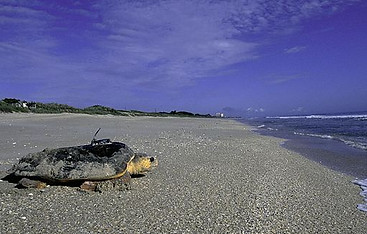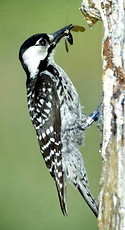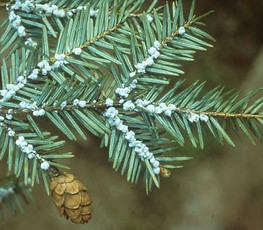Research
Species conservation using population genetics
Loggerhead sea turtle
Caretta caretta
The loggerhead sea turtle is a large, widely distributed species of oceanic turtle that is recognized as threatened by the International Union for the Conservation of Nature (IUCN). The greatest threats to loggerhead populations are entanglement in fishing gear and nesting habitat loss and encroachment by humans. Loggerhead populations reached their lowest point in the early 1990's, but thanks to increased public outreach and education, changes in fishing regulations, and laws requiring TEDs (Turtle Excluder Devices) on fishing nets, populations have begun to recover. However, we still know relatively little about the population dynamics of loggerheads and the necessary criteria for population recovery.
In collaboration with the Georgia, South Carolina, North Carolina and Florida Departments of Natural Resources, we are conducting a long-term population genetics study of nesting female loggerhead sea turtles in the Northern Recovery Unit (NC, SC, GA and Northern FL). We extract maternal DNA from eggs to identify the female associated with each nest. This allows us to determine important demographic variables such as population size, clutch frequency, recruitment and survival. We can use these population data to assess recovery status and develop management planning models.

Loggerhead sea turtle with radio transmitter. Source: Wikimedia commons
More information about our collaborators here.
Developing genetic tools for conservation
Genetic tools have a wide range of applications in conservation. We can use genetic tools to more clearly understand how populations change over space and time. A particularly useful tool in population genetics is microsatallite genotyping. Microsatallites are non-coding regions of DNA in which short sequences of base-pairs are repeated. Because microsatallites are highly polymorphic (many potential alleles for one locus) they are strong markers for identifing individuals, determining parentage and making inferences about genetic differences between populations. One component of our research is identifying microsatallite markers that could be used in future research involving conservation of threatened or endangered species. We have identified useful microsatallites in many species of concern including the red-cockaded woodpecker, Eastern hemlock, the Eastern indigo snake, as well as several threatened marine turtle species.
Red-cockaded woodpecker
Leuconotopicus borealis
Eastern Hemlock
Tsuga canadensis

Female red-cockaded woodpecker. Source: Wikimedia commons

Woolly adelgid infestation of Eastern hemlock. Source: Wikimedia commons
Eastern Indigo Snake
Drymarchon couperi

Eastern indigo snake. Source: Wikimedia commons
How do landscape and environment affect gene flow?
Salt Marsh Ecosystem
Black needlegrass (Juncus roemarianus) and Gulf marsh fiddler crab (Uca longisignalis)
Salt marshes are ecologically and economically important ecosystems that are rapidly declining worldwide due to human modification and sea level rise. To conserve ecosystem function and population persistence in the salt marsh, species management must focus on the preservation of genetic diversity. Landscape genetics can be used to determine the landscape features important for gene flow, an important source of genetic diversity.
Dr. Hayley Tumas led a project investigating 1) the genetic structure of key species of Southeastern salt marshes, and 2) how predicted sea level rise will impact gene flow within populations of these species. This study informed land managers on how to preserve genetic diversity within the salt marsh under current and future conditions and enhance our understanding of salt marsh ecology.

Salt marsh at Moss Point, MS. Source: H. Tumas
Disease resistance using transgenics
Transgenesis is the process of introducing new genes into an organism's genome for the purpose of creating desired phenotypic changes. Unlike traditional breeding, which can be a potentially lengthy and difficult process, transgenics allows for target genes to be introduced relatively quickly into an organism without additional undesired traits. An important application of transgenics is incorporating disease resistance into ecologically and economically important species threatened by a pest or pathogen.
American chestnut
Castanea dentata
American chestnut, once a dominant Eastern forest species, is suceptible to a number of introduced diseases--primarily chestnut blight (Cryphonectria parasitica) and root rot (Phytophthora cinnamomi). Efforts to create hybrid chestnuts for restoration have focused on integrating blight resistance, but not resistance to root rot. We are interested in identifying genes that are associated with root rot resistance that can potentially be integrated into and expressed by American chestnut.


Phytophthora root rot on chestnut. Source: USDA
American chestnut leaves. Source: Wikimedia commons